AUCTORES
Globalize your Research
Case Report | DOI: https://doi.org/10.31579/2690-8794/286
President of all nations Morning star hospital, Enayam Thoppu, Kanyakumari District, Tamil nadu state, India.
*Corresponding Author: Ramachandran Muthiah., President of all nations Morning star hospital, Enayam Thoppu, Kanyakumari District, Tamil nadu state, India.
Citation: Ramachandran Muthiah, (2025), Rheumatic Mineralization of Heart Valves and Its Therapeutics, Clinical Medical Reviews and Reports, 7(1); DOI:10.31579/2690-8794/286
Copyright: © 2025, Ramachandran Muthiah. This is an open access article distributed under the Creative Commons Attribution License, which permits unrestricted use, distribution, and reproduction in any medium, provided the original work is properly cited.
Received: 20 March 2025 | Accepted: 28 March 2025 | Published: 04 April 2025
Keywords: rheumatic mineralization; mitral-aortic “j-shaped” calcification; “mushroom shaped” calcified bicuspid aortic valve; hutchinson-gilford progeria syndrome; therapeutic strategies
Aim: To present the heterotopic ossification of left-sided heart valves due to rheumatic inflammation and biomineralization. Introduction: Calcification in the region of mitral-aortic continuity is significant at its origin and etiopathogenesis. The etiology of valvular calcification may be divided into 3 groups, namely, inflammation, degeneration and metabolic disturbances. Calcification of cardiac valve leaflets is most often due to rheumatic etiology in tropical nations.
Case Report: A 52-year-old male developed sudden onset of light-headedness and palpitations due to atrial fibrillation. Transthoracic 2D echocardiography revealed calcification of anterior mitral leaflet and aortic valve which resembles a bone-like structure and the patient was advised double valve replacement.
Conclusion: It was known that the cellular mechanisms play an important role in its genesis and therapeutic strategies are targeted to reverse this process by understanding its biological mediators.
A calcified valve is the hardening of the valve due to the deposition of calcium salts at the site of wear-and-tear and damage. It is important to remember that any valve can become calcified. However, calcification is more likely to affect the valves on the left side of the heart (mitral and aortic valves) since they experience greater pressure, more wear-and-tear damage with increased risk of deposition of calcium phosphate salts, known as dystrophic calcification. This senile valve calcification occurs on the mitral valve at the age of 50-70 years and on the aortic valve at 70-90 years of age. Calcification can occur earlier in life when associated with rheumatic heart disease and heavy calcification was seen in severely damaged valves by the rheumatic process. Since the disease process is complex and involves several different cell types, it is important to understand the cellular and matrix architecture of a normal heart valve. The valve endothelial cells (VECs) line the outer surface of the valve and maintain homeostasis by regulating permeability, paracrine signaling and function as a barrier to limit inflammatory cell infiltration and lipid accumulation. The valve interstitial cells (VICs) are the predominant cell type within the fibrosa, spongiosa and ventricularis layers of the valve and secrete extracellular matrix, including collagen, elastin, and glycosaminoglycan. The fibrosa consists of fibroblasts, circumferentially arranged fibrillar collagen fibers (type I and type III) and serves a load-bearing function. The spongiosa is predominantly found at the base of the leaflet and it is a layer of loose connective tissue containing mesenchymal cells, fibroblasts, mucopolysaccharides and it resist the compressive forces within the cusps. Ventricularis contain elastin fibers, oriented perpendicularly to the collagen and it reduces the radial strain. The normal aortic valve is made up of 3 cusps and its arrangement results in even distribution of mechanical stress to the valve ring and the aorta [1]. At their base, the valve leaflets are attached to a dense collagenous network, called the annulus, which facilitate their attachment to the aortic root and the dissipation of mechanical force. The anterior mitral leaflet is in direct continuity with left half of non-coronary cusp and the adjacent third of left coronary cusp. The mitral-aortic intervalvular fibrosa is the junctional tissue between the elements of mitral and aortic valves, called as mitral-aortic membrane or curtain. It is relatively avascular and offers little resistance to infection [2]. Historically, calcification of valves has been attributed to prolonged ‘wear and tear’ and age-related valvular degeneration, and recent evidence suggests that it is the result of active inflammatory process [3] leading to osteogenesis by involving biochemical, humoral and genetic factors. The mechanism of valvular calcification is similar to skeletal bone formation and it is the most common manifestation of rheumatic heart disease. The anterior mitral leaflet - aortic cusp continuity region was particularly affected by this mineralization process and so this case had been reported.

Figure 1: ECG showing the ‘atrial fibrillation’ with LVH (left ventricular hypertrophy).

Figure 2:X-ray chest PA (postero-anterior) view showing concentric LVH (left ventricular hypertrophy) and dilated ascending aorta.

Figure 3: Parasternal long axis view showing the dense calcification of anterior mitral leaflet (AML) with commissural fusion in a 52-year old male.

Figure 4: Parasternal long axis view showing the anterior mitral leaflet as a dense calcific bar with opening of the stenotic mitral valve in a 52-year old male.

Figure 5: Parasternal long axis view showing the calcific bar of anterior mitral leaflet and aortic valve in a 52-year old male.

Figure 6: Parasternal long axis view showing the calcific extension of aortic valve to anterior mitral leaflet in a 52-year old male

Figure 7: Parasternal long axis view showing the J-shaped appearance of mitral-aortic calcification in a 52-year old male.

Figure 8: Short axis view showing the dense calcific bar in the aortic valve visible as calcium stone in a 52-year old male.

Figure 9: Subcostal view showing the rheumatic thickening of mitral valve and LA Dilatation.

Figure 10: Apical view showing the ‘flame-shaped’ mitral stenosis jet in a 52-year old male.

Figure 11: Subcostal view showing the mitral stenosis jet.Figure 12: CW (continuous wave) Doppler showing the severe mitral stenosis.

Figure 12: CW (continuous wave) Doppler showing the severe mitral stenosis.

Figure 13: CW (continuous wave) Doppler showing the aortic stenosis jetin a 52-year-old male.

Figure 14: M-mode LV study showing the high ejection fraction (87%).

Figure 15: M-mode at AML showing the dense calcium in a 52-year old male.

Figure 16: M-mode at aortic valve showing the dense calcium in a 52-year old male.

Figure 17: CW (continuous wave) Doppler showing the jets of aortic stenosis and regurgitation in a 34-year old male.

Figure 18: Apical view showing the rheumatic mitral valve in a 34-year old male (Rheumatic mitral stenosis).

Figure 19: Apical view showing the annular mitral stenosis with basal leaflet calcification in a 65-year old female.

Figure 20: CW (continuous wave) Doppler showing the annular mitral stenosis (mild) jet in a 65-year old female.

Figure 21: Parasternal long axis view showing the extension of aortic valve calcification to anterior mitral leafl;et in a 64-year old male.

Figure 22: CW (continuous wave) Doppler showing the severe aortic stenosis jet in a 64-year old male.

Figure 23: Parasternal long axis view showing dense calcium in aortic valve and anterior mitral leaflet in a 34-year old male.

Figure 24: Parasternal long axis view showing the ‘mushroom’ calcification of bicuspid aortic valve in 34-year old male.

Figure 25: “mushroom” shaped calcification of Bicuspid aortic valve in a 34-year old male.

Figure 26: Short axis view showing the dense bicuspid aortic valve calcification in 34-year old male.

Figure 27: Parasternal long axis view showing the dense calcium in aortic valve and anterior mitral leaflet in EMF (endomyocardial fibrosis) in a 58-year old male.

Figure 28: Apical view showing the calcification of anterior mitral leaflet and RV apical fibrosis suggesting EMF (endomyocardial fibrosis) and rheumatic mitral stenosis in a 58-year old male.

Figure 29: Parasternal long axis view showing the calcification of anterior mitral leaflet in a 60-year old male.

Figure 30: Showing the dense calcium in mitral-aortic membrane in a 60-year old male.

Figure 31: Dense calcium in aortic valve mimicking as ‘calcific amorphous tumor’ in a 60-year old male.

Figure 32: Rheumatic calcification of mitral- aortic membrane in a one-year old female child.
Review of literature: Lazare Riviere, a French physician in 1663, identified large caruncle-like masses obstructing the left ventricular outflow to the aorta in necropsy findings as an earliest description of calcific aortic stenosis [4] and the calcified mass was originally attributed to endocarditis. In 1846, Hass suggested a degenerative process occurred within the valve itself to initiate ossification. In 1904, Moenckeburg found that the aortic valve calcification occurred as a result of calcium deposition on the valve cusps due to degeneration within the layers of valve leaflets or extension of sclerotic changes of aorta to valve cusps. In 1924, Dr. Carey Coombs described the inflammatory lesion in the rheumatic valve leaflets and the presence of new vessels developing within the valves [5]. In 1931, Christian first described that aortic stenosis with calcification of the cusps was possibly of rheumatic origin [6]. In 1938, Clawson, Noble and Lugkins stated that the ‘calcified aortic nodular deformity’ was predominantly of a rheumatic nature [7]. In 1939, Dry and Willius concluded that the etiologic factor of calcification was rheumatic [8] and Hamburger and Saphir found evidence for both a rheumatic and nonrheumatic origin [9]. In 1961, Edwards discussed the occurrence of calcification in stenotic rheumatic valves [10].
Pathogenesis: Rheumatic heart disease is the most common cause of valvular heart disease in tropical nations such as India. Rheumatic valve calcification is not a random passive process, but it is a regulated, inflammatory cellular process associated with the expression of osteoblast markers and neoangiogenesis. Early stage of calcification is in a manner akin to atherosclerosis. Once the osteoblast activity has been established, the disease progression is more likely to be regulated by the mediators of calcium homeostasis [11]. A similar osteoblast-like process that occurs in degenerative calcific valve develops in the calcific process of rheumatic valves [12]. The cellular and molecular mechanisms that involves the valve, circulating and bone marrow derived cells have been implicated in the pathogenesis of calcification. The cellular differences between the rheumatic and degenerative lesions are the intense inflammatory infiltrate and VEGF (vascular endothelial growth factor) expression in areas of neoangiogenesis found in rheumatic valves compared to degenerative valves. The cardiovascular risk factors such as exposure to biochemical (hypercholesterolemia, hyperglycemia) or mechanical (hypertension) may disrupt the normal cellular and matrix architecture of the valve, produces an inflammatory tissue milieu, atherosclerosis like lesions, osteoblastic transformation and calcification process. The key mediators of valve calcification are shown in table 1.
| Key mediators of valve calcification |
VECs (valve endothelial cells) to mesenchymal transition VICs (valve interstitial cells) to osteoblast-like bone forming cells Matrix vesicle formation gives rise to microcalcific nodules Lipid accumulation |
Table-1: (Key mediators of valve calcification).
These mediators promote neoangiogenesis, extracellular matrix remodeling, fibrosis and calcification of valve leaflets. Calcification of heart valves is an immune-inflammatory disease process. The rheumatic involvement produces an inflammatory tissue environment that disrupts the endothelial layer of valve leaflets in a mechanism similar to that in atherosclerosis. The endothelial disruption may allow the lipids, including low-density lipoproteins, apolipoprotein B, (a) and E2 to penetrate and accumulate in areas of inflammation and undergo oxidative modification. These oxidative lipoproteins are highly cytotoxic, capable of stimulating intense inflammatory activity and subsequent mineralization [13]. The VECs (vascular endothelial cells) are activated and the expression of adhesion molecules that facilitate recruitment and transendothelial migration of monocytes which differentiate into macrophages, and infiltration of T-lymphocytes and α-actin expressor cells. The macrophages release matrix metalloproteases and cystene endoproteases that lead to degradation of collagen and elastin in the valve matrix to disrupt the normal valve architecture [14]. The T-cells release proinflammatory cytokines, including transforming growth factor-β1, tumor necrosis factor- α and interleukin-1-β which induce myofibroblast activation and cellular proliferation, ultimately help to stimulate and establish subsequent fibrotic and calcification processes that drive increasing valve stiffness [15],[16]. Increased levels of activated CD8 cells (cytotoxic T-cells or natural killer cells) and memory effector cells in patients with calcified valves may indicate a systemic adaptive immune response on valve calcification [17]. Lrp5, a coreceptor of the family of LDL receptors, has been found to regulate cellular proliferation and bone formation in valvular tissues [18]. Genetic bone markers have been found to be important in the development of osteoblast bone formation, a process that precedes calcification [19]. Lp(a) levels mediate the effect of SN rs10455872 in the gene LPA in valvular calcification. The kringle IV type 2 (KIV-2) repeats at LPA locus, which encode apolipoprotein (a) and its variation determines the plasma Lp(a) levels. NOTCH 1 on chromosome 9q34-35 is a susceptibility locus for bicuspid aortic valve and accelerates valvular calcification [20]. At the site of endothelial damage, the endothelial progenitor cells participate in the repair process by transiently establishing residence and secreting factors that facilitate proliferation and migration of resident endothelial cells [21]. In calcified valves, these progenitor cells are dysfunctional and express increased proapoptotic caspne-3 activity and decreased telomeric –repeat binding factor-2 (TERF2) expression, indicating progenitor cell senescence [22]. The VECs (valvular endothelial cells), lose the endothelial cell properties, no longer express endothelial–specific markers such as cadherin, pieracque-like pleomorphism characteristic of mesenchymal cells or myofibroblasts and express α –smooth muscle actin, type I collagen and vimentin [23]. The transforming growth factor-β, transcription factor Msx2 and β-catenin signaling increase the motility and migration of these ‘transformed’ VECs into the surrounding tissues [24]. Once the endothelial-to-mesenchymal transition (EnMT) occurs, the BMP 2 and 4 (bone morphogenic proteins) secreted by the activated endothelial cells stimulate the calcification by activating Smad and Wnt/B-catenin signaling and upregulate the expression of osteochondrogenic transcription factor Msx2 and the faster osteoblast transcription factor Runx2 [25]. Once Runx2 is expressed, the cells are committed to an osteoblast lineage, upregulated the expression of calcification-related proteins (osteopontin, bone sialoprotein II, osteocalcin) and undergo calcification [26]. A subpopulation of VICs (valve interstitial cells) become activated in the inflammatory zone of the valve and differentiated into myofibroblasts. These myofibroblasts secrete matrix metalloproteinases which play a role in the restructuring of valve leaflet matrix and responsible for accelerated fibrosis in this process [27]. Under the influence of signaling pathways, Wnt-3-Lrp5-β catenin [28], OPG/RANK/RANKL pathway (osteoproteogen/receptor activation of nuclear factor kappa B/RANK ligand [29], Runx-2/NOTCH1, activated by BMPs, the myofibroblasts undergo differentiation into osteoblasts, which subsequently coordinate calcification as a part of a highly regulated process akin to new bone formation and mineralize to form calcific nodules on the valves. The local environment drives the mesenchymal progenitor cells to undergo osteogenesis differentiation, elaborate bone matrix in the valve [30] and capable of contributing to valve calcification. The transition of valvular cells to an osteoblast-like phenotype is not a mutually exclusive process and these osteoblast-like cells may actively generate vesicles or undergo apoptosis to accumulate calcium and form microcalcifications. Matrix vesicles (100 to 300nm) are derived from plasma membrane of smooth muscle cells, encapsulate the calcium inhibitors (MGP- vitamin K dependent matrix Gla protein, Fetuin A- a liver derived protein, osteoproteogens), sequester, render them inactive [31] and serve as a nidus for calcium deposition [32]. Calcifying nanoparticles (10-500nm in size) consistent with nanobacteria [33],[34] which nucleate, crystallize and function as a nidus for matrix calcification [35]. The activated matrix metalloproteinases (1,2,3 and 9) and cathepsins (S,K,V and G) degrade the collagen and elastin, compromises valve integrity, augment the inflammatory response and allows for the expansion of calcified nodules [36]. By the end stage of the disease, maturation of valve calcification occurs with lamellar bone and hemopoietic tissue and it is sustained by neoangiogenesis. The new vessels localizing to the region of inflammation and surrounds the calcific deposits. Both intercellular adhesion molecule-1 and vascular cell adhesion molecule-1 expression is increased in these vessels, suggesting that they act as an important portal of entry of inflammatory cells [37]. The mast cells get degranulated in calcified valves and release tryptase which degrade the angiogenesis inhibitor endostatin [38] and down regulation of local angiogenesis inhibitors such as chondromodulin-1 and pronomodulin-1 have been occurred. Once neovascularization has been established, the network of newly formed vessels, expressing the endothelial markers Tie-2, vascular endothelial growth factor receptor-2, smooth muscle α-actin, facilitate rapid transit of inflammatory cells and procalcific signaling molecules and, these inflammatory lesions in rheumatic valvular disease is associated with angiogenesis and osteogenesis which may contribute disease progression and valvular mineralization.
Echocardiographic features: The genesis of calcification in aortic valve is always rheumatic [39] and the calcific extension to the mitral valve resembles J-shaped as shown in Figure 7. Calcification resembling a string of pearls in both aortic and mitral valves are typical of endocarditis. Calcification of mitral-aortic membrane has been reported as highly suggestive of radiation-induced lesions [40] and a pathologic echo density of anterior mitral leaflet is its characeteristic feature [41]. But the dense calcification of anterior mitral leaflet as a bone-like structure was observed due to rheumatic mineralization as shown in Figures 3 and 4 along with calcification of aortic valve as in Figures 5 to 7 and in short axis view in Figure 8. The degenerative disease, as an aging process frequently involving the aortic and mitral valves and the central fibrous body is called as ‘Lev’s disease. Lenegre’s disease primarily involves the conduction system without affecting the fibrous skeleton of the heart. Both these conditions mostly results in isolated chronic heart blocks in adults. Degenerative calcification of mitral annulus may cause annular mitral stenosis in elderly and the difference between the annular mitral stenosis and rheumatic mitral stenosis [42] was shown in Table 2.
| Annular mitral stenosis (Figure 18 ) | Rheumatic mitral stenosis (Figure19) |
Heavy calcification at the base of leaflets Leaflet tips are free Leaflets open without dooming restriction | Calcification of leaflets mainly at the tips Leaflet tips thickened Restricted diastolic opening of leaflets with dooming |
Table 2: (Difference between annular mitral stenosis and rheumatic mitral stenosis)
Therapeutic Strategies: It is now clear that there is an active biology that leads to stiffening and calcification of valve leaflets [43] and so the valvular calcification is a biologic process.
Statins: Lipoprotein (a) has been shown to accumulate in both early and end-stage aortic valve lesions and to co-localize with calcium deposition [44]. In atherosclerosis, inflammation and lipid deposition are the key components in both development of arterial plaque and its stability. Adverse events are predominantly related to plaque rupture, and much of the benefit from statin therapy is due to plaque stabilization and a thickening of the fibrous cap. Lowering Lp(a) levels during early -stage aortic valve disease, with the use of either niacin [45] or novel specific Lp(a) inhibitors [46] can slow the progression to aortic stenosis. Lipid-lowering with HMG-Co A reductase inhibitors (statins) has been shown to decrease inflammatory cell infiltration, osteoblast bone markers (alkaline phosphatase and Runx2) and downregulated lipoprotein receptor-related protein 5/β- catenin signaling to decrease valve calcification in rabbit models [47]. Despite these findings, 3 large-scale clinical trials (SEAS-Simvastatin and Ezetimibe in Aortic Stenosis [48], SALTIRE- Scotish Aortic Stenosis and Lipid Lowering Trial [49] and ASTRONOMER (Aortic Stenosis Progression Observation: Measuring Effects of Rosuvastatin) [50] failed to show a benefit for statins to limit the progression of aortic valve calcification. Also, statins are known to promote osteoblast differentiation and calcification [51]. Lowering of lipid levels may decrease calcium deposition and, halt the progress of valve calcification, but did not reverse the established calcification or valve dysfunction [52]. When the valvular interstitial cells (VICs) become osteoblast-like cells, statins may actually have a procalcifying effect.
Wafarin: Warfarin is an inhibitor of ɤ-carboxylase and vitamin K epoxide reductase, inhibits MGP (matrix Gla protein- an inhibitor of bone morphogenic protein (BMP) signaling [53]) activity and was shown to promote valvular calcification [54].
Fetuin A: It is a potent circulating inhibitor of calcification [55], acts by binding the cluster of calcium and phosphate to stabilize these ions and prevent uptake by cells and its deficiency was associated with valvular calcification [56]. Therapies with fetuin A show a potential in inhibition of valvular calcification [57].
ACE inhibitors: The stenotic valve is characterized by extensive thickening due to the accumulation of fibrous tissue and remodeling of the extracellular matrix. Myofibroblasts infiltrate the myocardium, secrete extracellular matrix proteins and accelerate the fibrosis, which is an integral part of the hypertrophic process [58]. The increased afterload in aortic stenosis serves as an additional load on the left ventricle and is associated with increased hypertrophic remodeling and LV dysfunction [59], leading to increased apoptosis. Myocardial ischemia occurs due to increased afterload and coronary flow reserve is impaired since the density of the coronary capillary network does not expand sufficiently to meet the demand in this pathological hypertrophy, in contrast to physiological hypertrophy in which the density of capillary network expand sufficiently. Areas of fibrosis are observed to co-localize with areas of myocyte apoptosis and drive the decompenstation of the hypertrophic myocardial response. The rennin-angiotensin system is thought to modify the fibrotic process. Tissue angiotensin-converting enzyme (ACE) and angiotensin II are upregulated in stenotic aortic valves and angiotensin receptors have been identified on valve myofibroblasts [60]. Polymorphism of the ACE 1/D gene have been associated with variations in left ventricular mass [61]. Beneficial effects with respect to hypertrophy, on valve narrowing [62], reduction in mortality and cardiovascular events [63] and less pronounced valve remodeling [64] were observed in patients with aortic stenosis, maintained on ACE inhibitors and angiotensin receptor blockers. There is an evidence that angiotensin receptor blocker therapy inhibits the development of atherosclerosis as well as myofibroblast and osteoblast trans-differentiation in rabbit aortic valves suggests that this drug class may be helpful in slowing aortic stenosis progression [65]. The blood pressure-lowering effect of ACE inhibitors reduces the mechanical stress and strain on the aortic valve and play a role in slowing the aortic stenosis progression by reducing inflammation, stabilizing plaque formation and mitigating the fibrotic process [66].
Desnosumab: The OPG/RANK/RANKL axis appears to have a central regulatory role in both calcification and osteoporosis, which coordinate calcium homeostasis via the action of osteoblasts and osteoclasts. OPG (osteoprotegerin) is a decoy receptor of RANKL, a potent stimulator of osteoclast differentiation and bone resorption [67]. Increased expression of RANKL (receptor activator of nuclear factor kappa B ligand) and reduced levels of OPG has been also observed in stenotic aortic valves similar to osteoporosis. Inactivation of OPG in mice develops extensive vascular calcification [68]. The development of anti-RANKL monoclonal antibody desnosumab promising a strong rationale in the treatment of aortic stenosis.
Bisphosphonates: Calcification is a critical process in determining the progress of valvular stenosis and a overlap in pathophysiology between the aortic stenosis and osteoporosis provide a rationale for drugs such as bisphosphonates to reduce the valvular calcium, especially in patients with renal failure and bioprosthetic valves [69],[70]. However, it had no effect on freedom from aortic valve replacement or survival [71].
Gene transfer: By understanding the cell biology of valvular calcification, gene transfer or cell-based therapies are investigated to modulate the cellular mechanism of calcification. The expressing Runx2 in VICs (valvular interstitial cells) commits these cells to an osteoblast-like phenotype. Gene transfer of small interfering RNA that targets Runx2 using adenovirus or recombinant nonviral vectors have been shown to prevent calcification both in vitro and in vivo [72],[73]. Heterotopic ossification (HO) is characterized by pathologic endochondral bone formation at nonskeletal sites. Angiogenesis and osteogenesis are highly coupled during bone development. In the process of osteoblast differentiation, a set of bone specific genes (ALP-alkaline phosphatase, osteocalcin) are activated. Run-related protein 2 (Runx2) is a key regulator of these genes, cooperate with BMP-specific R-smads and it is considered as a molecular switch (myoblasts to osteoblasts phenotype) in osteoblast biology. Hypoxia is able to upregulate BMP2 in osteoblasts via the activation of Hif1 α signaling pathway. Inhibition of Hif1 α (hypoxia induced factor 1 α leads to reduce vessel formation, which may facilitate migration of host mesenchymal stem cells to the bone regeneration site. Synergistic inhibition of endochondral bone formation by silencing the angiogenisc factor (Hif1 α) and osteogenic factor (Runx2) by using the RNA interference technology, allow to design more targeted therapies to inhibit angiogenesis and osteogenesis [74]. miRNAs (microRNAs) have essential roles in osteoblast differentiation and heterotopic ossification. miR-203 is involved in these processes by repressing Runx2 expression in the post-transcriptional level. Therapeutic overexpression of miR-203 in osteoblasts may reduce heterotopic ossification and even prevent this disorder [75]. Cotransduction of small or short interfering RNA (siRNA) against Runx2 and Hif1 α to inhibit heterotopic ossification have been evaluated. TNP-470 is an antiangiogenic agent that inhibits the neovessel formation and TNP-70 inhibits the biological activity of BMP2 in early stage of bone induction. A potent delivery of a nanocomposite consisting of serum-soluble DOTAP/siRNA/PPAA-g-1% jeffamine formulation was shown to halt the osteogenic switch driven by BMP2 by silencing the Runx2m, the downstream mediator of BMP2 [76].
Investigational therapy: Osteoclast-like cells are identified in calcified lesions, which in turn capable of resorbing mineral deposits [77]. Thus, strategies to promote osteoclast recruitment or stimulate differentiation of monocytes and macrophages toward an osteoclast phenotype are the areas of active investigation. Strategies by delivering stem or progenitor cells via direct injection of small molecule inhibitors, osteoclasts, osteoclast-like cells or molecules that promote the transition of resident monocytes/macrophages towards an osteoclast lineage or viral vectors encoding inhibitory RNA (Runx2, Msx2) in areas of aortic valve lesions or to ischemic myocardium using a NOGA-guided catheter system [78] are under investigation.
Lonafarnib: Mutations in laminin A gene results in the production of a mutant lamin A protein, progerin, a component of nuclear envelope which become unstable, leading to cell death prematurally. The syndromes associated with these defects are called as ‘laminopathies’ (Hutchinson Gilford Progeria Syndrome (HGPS), Wiedemann-Rautenstranch syndrome, Restrictive dermopathy) [79]. In progeria, calcific aortic stenosis represents a degenerative premature aging process and principally involving the anterior mitral valve and proximal aortic valve cusps [80]. Systemic hypertension is common and appear before the child reaches the age of 5, and high mortality related to myocardial infarction and heart failure may occur. Farnesylation is essential for the function of both mutant and nonmutant lamin A protein, including progerin. Lonafarnib is a farnesyl transferase inhibitor that blocks the posttranslational farnesylation of prelamin A, an experimental drug under trials [81]. Another treatment attemted is a combination of two molecules-Zoledronic acid and pravastatin.
Interventional therapy: Balloon mitral valvotomy (BMV) is the procedure of choice for severe mitral stenosis when the valve morphology is feasible. However, BMV is contraindicated in bicommissural calcification since it results a high probability of leaflet tear with acute severe mitral regurgitation. BMV can be performed safely and successfully in unicommissuraly calcified mitral valves [82]. An emergency percutaneous transatrial balloon mitral commissurotomy is a life-saving procedure in a valve with unfavourable morphology, presented with cardiogenic shock in critical calcific mitral stenosis [83].[84].
Transcatheter valve implantation: TAVR (transcatheter aortic valve replacement) was approved by FDA (Food and drug administration) for high risk surgical candidates in June 2012. There is an increase in risk of stroke due to thrombotic embolic material from the calcified valve. tissue and vascular damage results in severe paravalvular regurgitation, which is poorly tolerated in hypertrophied left ventricle leading to increase in mortality [85]. The surgical risk for mitral valve replacement is very high due to the comorbidities and technical challenges related to calcium burden. Guerrero, et al reported the first-in-human percutaneous implantation of a balloon –expandable transcatheter valve in a native mitral valve [86]. The use of newer aortic THV technologies such as Lotus (Boston Scientific Corporation) and direct flow valves (direct flow medical) in the mitral position for severe MAC (mitral annular calcification) [87] and improved outcomes were observed [88].
Surgical therapy: Aortic valve replacement surgery remains the only established treatment for symptomatic aortic stenosis patients [89]. Hemodynamically significant asymptomatic patients will develop symptoms within 5 years, the issues of medical management and surgical correction may pay a close attention to the researchers [90]. Presence of moderate or severe valvular calcification identifies the patients with poor prognosis who may benefit from early valve replacement before the development of symptoms [91]. and it is to be determined whether this benefit overweighs the risk of surgery [92]. Calcific mitral stenosis with severe mitral annular calcification may present a different challenges to the surgeon. Extensive debridgement of calcium may increase the risk of paravalvular leakage and bleeding. Bypass of the mitral valve with a valved conduit is an another option for the treatment of severe calcific mitral stenosis [93]. Bioprosthetic valves are generally recommended for patients ˃ 65 years and there is also greater usage in younger patients due to lack of necessity of chronic anticoagulation. The Ross operation (replacement of aortic valve with a pulmonary autograft and replacement of the pulmonary valve with a homograft) is an alternate for adolescents, young adults, including woman who wish to become pregnant and it is not favoured by the majority of surgeons due to complexity of the procedure, but excellent outcomes occurred in centers with expertise in this procedure [94].
Screening of population: Aortic valve calcification extending to anterior mitral leaflet with severe aortic stenosis was shown in Figures 21 and 22 in a 64-year old male. A bicuspid aortic valve calcification with rheumatic mitral stenoisis was shown in Figures 17, 18, 23, 24 and it is ‘mushroom’shaped [95] as in Figure 25 in a 34-year old male. J-shaped [96] mitra-aortic calcification was shown in Figure 7 in a 52-year old male. Dense calcification of anterior mitral leaflet was shown in Figure 29 and aortic valve calcification resembling ‘calcified amorphous tumor’ [97] as in Figure 31 in a 60-year old male. Calcification of aortic valve in Endomyocardial fibrosis with rheumatic mitral stenosis was shown in Figures 27, 28 in a 58-year old male. Calcification of mitral-aortic membrane was shown in Figure 30 in a 60-year old male and in one-year old child as in Figure 32.
Clearly Auctoresonline and particularly Psychology and Mental Health Care Journal is dedicated to improving health care services for individuals and populations. The editorial boards' ability to efficiently recognize and share the global importance of health literacy with a variety of stakeholders. Auctoresonline publishing platform can be used to facilitate of optimal client-based services and should be added to health care professionals' repertoire of evidence-based health care resources.
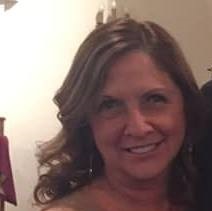
Journal of Clinical Cardiology and Cardiovascular Intervention The submission and review process was adequate. However I think that the publication total value should have been enlightened in early fases. Thank you for all.

Journal of Women Health Care and Issues By the present mail, I want to say thank to you and tour colleagues for facilitating my published article. Specially thank you for the peer review process, support from the editorial office. I appreciate positively the quality of your journal.
Journal of Clinical Research and Reports I would be very delighted to submit my testimonial regarding the reviewer board and the editorial office. The reviewer board were accurate and helpful regarding any modifications for my manuscript. And the editorial office were very helpful and supportive in contacting and monitoring with any update and offering help. It was my pleasure to contribute with your promising Journal and I am looking forward for more collaboration.

We would like to thank the Journal of Thoracic Disease and Cardiothoracic Surgery because of the services they provided us for our articles. The peer-review process was done in a very excellent time manner, and the opinions of the reviewers helped us to improve our manuscript further. The editorial office had an outstanding correspondence with us and guided us in many ways. During a hard time of the pandemic that is affecting every one of us tremendously, the editorial office helped us make everything easier for publishing scientific work. Hope for a more scientific relationship with your Journal.

The peer-review process which consisted high quality queries on the paper. I did answer six reviewers’ questions and comments before the paper was accepted. The support from the editorial office is excellent.

Journal of Neuroscience and Neurological Surgery. I had the experience of publishing a research article recently. The whole process was simple from submission to publication. The reviewers made specific and valuable recommendations and corrections that improved the quality of my publication. I strongly recommend this Journal.
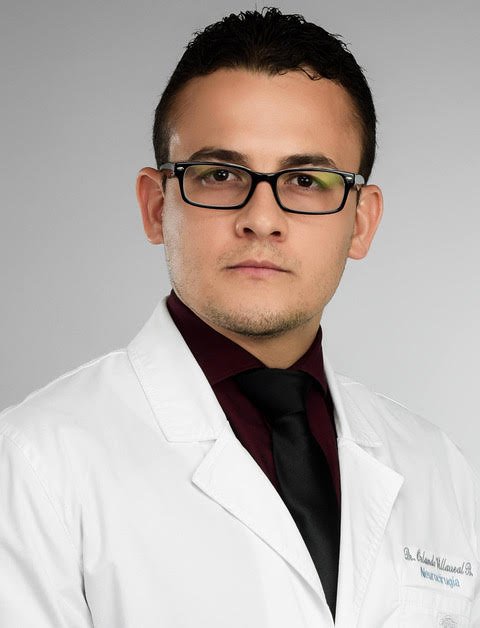
Dr. Katarzyna Byczkowska My testimonial covering: "The peer review process is quick and effective. The support from the editorial office is very professional and friendly. Quality of the Clinical Cardiology and Cardiovascular Interventions is scientific and publishes ground-breaking research on cardiology that is useful for other professionals in the field.

Thank you most sincerely, with regard to the support you have given in relation to the reviewing process and the processing of my article entitled "Large Cell Neuroendocrine Carcinoma of The Prostate Gland: A Review and Update" for publication in your esteemed Journal, Journal of Cancer Research and Cellular Therapeutics". The editorial team has been very supportive.

Testimony of Journal of Clinical Otorhinolaryngology: work with your Reviews has been a educational and constructive experience. The editorial office were very helpful and supportive. It was a pleasure to contribute to your Journal.

Dr. Bernard Terkimbi Utoo, I am happy to publish my scientific work in Journal of Women Health Care and Issues (JWHCI). The manuscript submission was seamless and peer review process was top notch. I was amazed that 4 reviewers worked on the manuscript which made it a highly technical, standard and excellent quality paper. I appreciate the format and consideration for the APC as well as the speed of publication. It is my pleasure to continue with this scientific relationship with the esteem JWHCI.

This is an acknowledgment for peer reviewers, editorial board of Journal of Clinical Research and Reports. They show a lot of consideration for us as publishers for our research article “Evaluation of the different factors associated with side effects of COVID-19 vaccination on medical students, Mutah university, Al-Karak, Jordan”, in a very professional and easy way. This journal is one of outstanding medical journal.
Dear Hao Jiang, to Journal of Nutrition and Food Processing We greatly appreciate the efficient, professional and rapid processing of our paper by your team. If there is anything else we should do, please do not hesitate to let us know. On behalf of my co-authors, we would like to express our great appreciation to editor and reviewers.

As an author who has recently published in the journal "Brain and Neurological Disorders". I am delighted to provide a testimonial on the peer review process, editorial office support, and the overall quality of the journal. The peer review process at Brain and Neurological Disorders is rigorous and meticulous, ensuring that only high-quality, evidence-based research is published. The reviewers are experts in their fields, and their comments and suggestions were constructive and helped improve the quality of my manuscript. The review process was timely and efficient, with clear communication from the editorial office at each stage. The support from the editorial office was exceptional throughout the entire process. The editorial staff was responsive, professional, and always willing to help. They provided valuable guidance on formatting, structure, and ethical considerations, making the submission process seamless. Moreover, they kept me informed about the status of my manuscript and provided timely updates, which made the process less stressful. The journal Brain and Neurological Disorders is of the highest quality, with a strong focus on publishing cutting-edge research in the field of neurology. The articles published in this journal are well-researched, rigorously peer-reviewed, and written by experts in the field. The journal maintains high standards, ensuring that readers are provided with the most up-to-date and reliable information on brain and neurological disorders. In conclusion, I had a wonderful experience publishing in Brain and Neurological Disorders. The peer review process was thorough, the editorial office provided exceptional support, and the journal's quality is second to none. I would highly recommend this journal to any researcher working in the field of neurology and brain disorders.

Dear Agrippa Hilda, Journal of Neuroscience and Neurological Surgery, Editorial Coordinator, I trust this message finds you well. I want to extend my appreciation for considering my article for publication in your esteemed journal. I am pleased to provide a testimonial regarding the peer review process and the support received from your editorial office. The peer review process for my paper was carried out in a highly professional and thorough manner. The feedback and comments provided by the authors were constructive and very useful in improving the quality of the manuscript. This rigorous assessment process undoubtedly contributes to the high standards maintained by your journal.
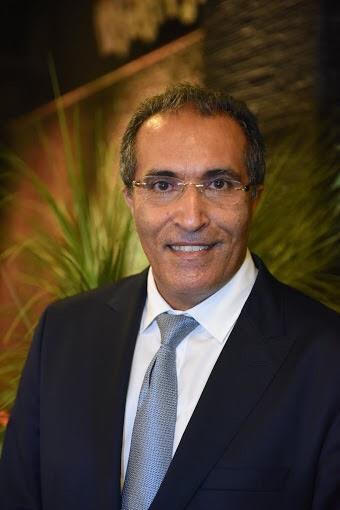
International Journal of Clinical Case Reports and Reviews. I strongly recommend to consider submitting your work to this high-quality journal. The support and availability of the Editorial staff is outstanding and the review process was both efficient and rigorous.
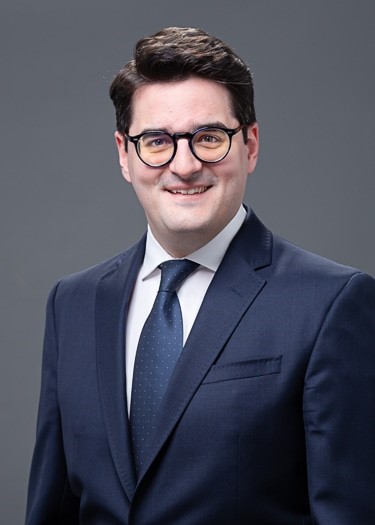
Thank you very much for publishing my Research Article titled “Comparing Treatment Outcome Of Allergic Rhinitis Patients After Using Fluticasone Nasal Spray And Nasal Douching" in the Journal of Clinical Otorhinolaryngology. As Medical Professionals we are immensely benefited from study of various informative Articles and Papers published in this high quality Journal. I look forward to enriching my knowledge by regular study of the Journal and contribute my future work in the field of ENT through the Journal for use by the medical fraternity. The support from the Editorial office was excellent and very prompt. I also welcome the comments received from the readers of my Research Article.

Dear Erica Kelsey, Editorial Coordinator of Cancer Research and Cellular Therapeutics Our team is very satisfied with the processing of our paper by your journal. That was fast, efficient, rigorous, but without unnecessary complications. We appreciated the very short time between the submission of the paper and its publication on line on your site.

I am very glad to say that the peer review process is very successful and fast and support from the Editorial Office. Therefore, I would like to continue our scientific relationship for a long time. And I especially thank you for your kindly attention towards my article. Have a good day!

"We recently published an article entitled “Influence of beta-Cyclodextrins upon the Degradation of Carbofuran Derivatives under Alkaline Conditions" in the Journal of “Pesticides and Biofertilizers” to show that the cyclodextrins protect the carbamates increasing their half-life time in the presence of basic conditions This will be very helpful to understand carbofuran behaviour in the analytical, agro-environmental and food areas. We greatly appreciated the interaction with the editor and the editorial team; we were particularly well accompanied during the course of the revision process, since all various steps towards publication were short and without delay".

I would like to express my gratitude towards you process of article review and submission. I found this to be very fair and expedient. Your follow up has been excellent. I have many publications in national and international journal and your process has been one of the best so far. Keep up the great work.

We are grateful for this opportunity to provide a glowing recommendation to the Journal of Psychiatry and Psychotherapy. We found that the editorial team were very supportive, helpful, kept us abreast of timelines and over all very professional in nature. The peer review process was rigorous, efficient and constructive that really enhanced our article submission. The experience with this journal remains one of our best ever and we look forward to providing future submissions in the near future.

I am very pleased to serve as EBM of the journal, I hope many years of my experience in stem cells can help the journal from one way or another. As we know, stem cells hold great potential for regenerative medicine, which are mostly used to promote the repair response of diseased, dysfunctional or injured tissue using stem cells or their derivatives. I think Stem Cell Research and Therapeutics International is a great platform to publish and share the understanding towards the biology and translational or clinical application of stem cells.
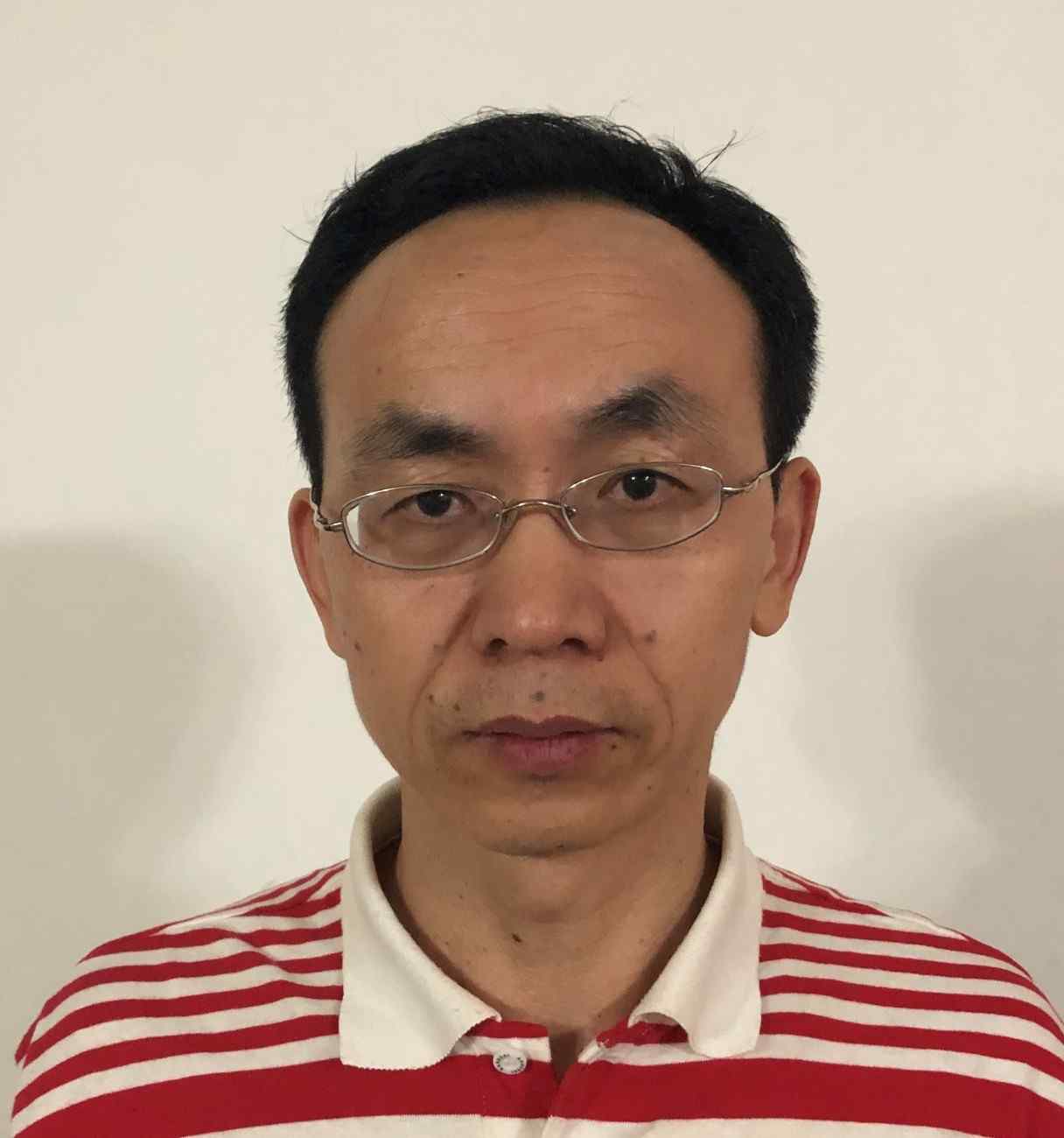
I would like to give my testimony in the support I have got by the peer review process and to support the editorial office where they were of asset to support young author like me to be encouraged to publish their work in your respected journal and globalize and share knowledge across the globe. I really give my great gratitude to your journal and the peer review including the editorial office.

I am delighted to publish our manuscript entitled "A Perspective on Cocaine Induced Stroke - Its Mechanisms and Management" in the Journal of Neuroscience and Neurological Surgery. The peer review process, support from the editorial office, and quality of the journal are excellent. The manuscripts published are of high quality and of excellent scientific value. I recommend this journal very much to colleagues.
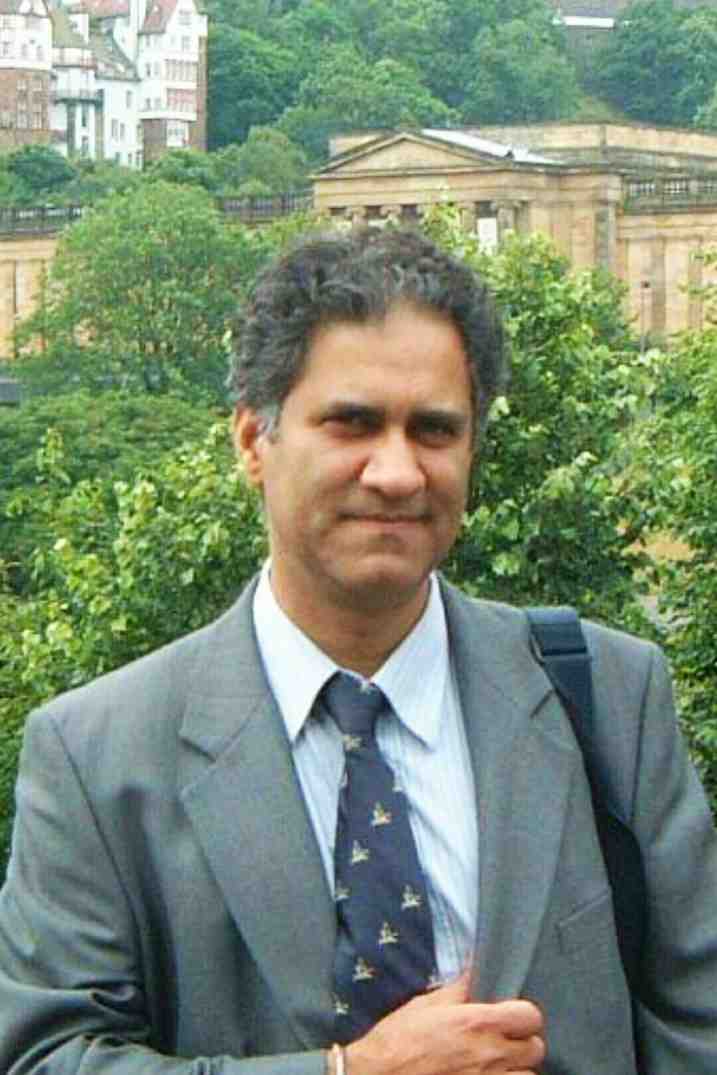
Dr.Tania Muñoz, My experience as researcher and author of a review article in The Journal Clinical Cardiology and Interventions has been very enriching and stimulating. The editorial team is excellent, performs its work with absolute responsibility and delivery. They are proactive, dynamic and receptive to all proposals. Supporting at all times the vast universe of authors who choose them as an option for publication. The team of review specialists, members of the editorial board, are brilliant professionals, with remarkable performance in medical research and scientific methodology. Together they form a frontline team that consolidates the JCCI as a magnificent option for the publication and review of high-level medical articles and broad collective interest. I am honored to be able to share my review article and open to receive all your comments.

“The peer review process of JPMHC is quick and effective. Authors are benefited by good and professional reviewers with huge experience in the field of psychology and mental health. The support from the editorial office is very professional. People to contact to are friendly and happy to help and assist any query authors might have. Quality of the Journal is scientific and publishes ground-breaking research on mental health that is useful for other professionals in the field”.

Dear editorial department: On behalf of our team, I hereby certify the reliability and superiority of the International Journal of Clinical Case Reports and Reviews in the peer review process, editorial support, and journal quality. Firstly, the peer review process of the International Journal of Clinical Case Reports and Reviews is rigorous, fair, transparent, fast, and of high quality. The editorial department invites experts from relevant fields as anonymous reviewers to review all submitted manuscripts. These experts have rich academic backgrounds and experience, and can accurately evaluate the academic quality, originality, and suitability of manuscripts. The editorial department is committed to ensuring the rigor of the peer review process, while also making every effort to ensure a fast review cycle to meet the needs of authors and the academic community. Secondly, the editorial team of the International Journal of Clinical Case Reports and Reviews is composed of a group of senior scholars and professionals with rich experience and professional knowledge in related fields. The editorial department is committed to assisting authors in improving their manuscripts, ensuring their academic accuracy, clarity, and completeness. Editors actively collaborate with authors, providing useful suggestions and feedback to promote the improvement and development of the manuscript. We believe that the support of the editorial department is one of the key factors in ensuring the quality of the journal. Finally, the International Journal of Clinical Case Reports and Reviews is renowned for its high- quality articles and strict academic standards. The editorial department is committed to publishing innovative and academically valuable research results to promote the development and progress of related fields. The International Journal of Clinical Case Reports and Reviews is reasonably priced and ensures excellent service and quality ratio, allowing authors to obtain high-level academic publishing opportunities in an affordable manner. I hereby solemnly declare that the International Journal of Clinical Case Reports and Reviews has a high level of credibility and superiority in terms of peer review process, editorial support, reasonable fees, and journal quality. Sincerely, Rui Tao.

Clinical Cardiology and Cardiovascular Interventions I testity the covering of the peer review process, support from the editorial office, and quality of the journal.

Clinical Cardiology and Cardiovascular Interventions, we deeply appreciate the interest shown in our work and its publication. It has been a true pleasure to collaborate with you. The peer review process, as well as the support provided by the editorial office, have been exceptional, and the quality of the journal is very high, which was a determining factor in our decision to publish with you.
The peer reviewers process is quick and effective, the supports from editorial office is excellent, the quality of journal is high. I would like to collabroate with Internatioanl journal of Clinical Case Reports and Reviews journal clinically in the future time.
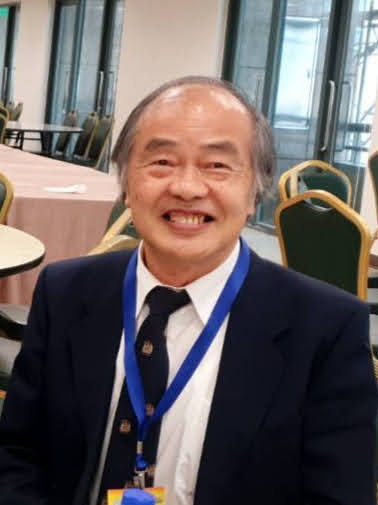
Clinical Cardiology and Cardiovascular Interventions, I would like to express my sincerest gratitude for the trust placed in our team for the publication in your journal. It has been a true pleasure to collaborate with you on this project. I am pleased to inform you that both the peer review process and the attention from the editorial coordination have been excellent. Your team has worked with dedication and professionalism to ensure that your publication meets the highest standards of quality. We are confident that this collaboration will result in mutual success, and we are eager to see the fruits of this shared effort.

Dear Dr. Jessica Magne, Editorial Coordinator 0f Clinical Cardiology and Cardiovascular Interventions, I hope this message finds you well. I want to express my utmost gratitude for your excellent work and for the dedication and speed in the publication process of my article titled "Navigating Innovation: Qualitative Insights on Using Technology for Health Education in Acute Coronary Syndrome Patients." I am very satisfied with the peer review process, the support from the editorial office, and the quality of the journal. I hope we can maintain our scientific relationship in the long term.
Dear Monica Gissare, - Editorial Coordinator of Nutrition and Food Processing. ¨My testimony with you is truly professional, with a positive response regarding the follow-up of the article and its review, you took into account my qualities and the importance of the topic¨.

Dear Dr. Jessica Magne, Editorial Coordinator 0f Clinical Cardiology and Cardiovascular Interventions, The review process for the article “The Handling of Anti-aggregants and Anticoagulants in the Oncologic Heart Patient Submitted to Surgery” was extremely rigorous and detailed. From the initial submission to the final acceptance, the editorial team at the “Journal of Clinical Cardiology and Cardiovascular Interventions” demonstrated a high level of professionalism and dedication. The reviewers provided constructive and detailed feedback, which was essential for improving the quality of our work. Communication was always clear and efficient, ensuring that all our questions were promptly addressed. The quality of the “Journal of Clinical Cardiology and Cardiovascular Interventions” is undeniable. It is a peer-reviewed, open-access publication dedicated exclusively to disseminating high-quality research in the field of clinical cardiology and cardiovascular interventions. The journal's impact factor is currently under evaluation, and it is indexed in reputable databases, which further reinforces its credibility and relevance in the scientific field. I highly recommend this journal to researchers looking for a reputable platform to publish their studies.

Dear Editorial Coordinator of the Journal of Nutrition and Food Processing! "I would like to thank the Journal of Nutrition and Food Processing for including and publishing my article. The peer review process was very quick, movement and precise. The Editorial Board has done an extremely conscientious job with much help, valuable comments and advices. I find the journal very valuable from a professional point of view, thank you very much for allowing me to be part of it and I would like to participate in the future!”

Dealing with The Journal of Neurology and Neurological Surgery was very smooth and comprehensive. The office staff took time to address my needs and the response from editors and the office was prompt and fair. I certainly hope to publish with this journal again.Their professionalism is apparent and more than satisfactory. Susan Weiner

My Testimonial Covering as fellowing: Lin-Show Chin. The peer reviewers process is quick and effective, the supports from editorial office is excellent, the quality of journal is high. I would like to collabroate with Internatioanl journal of Clinical Case Reports and Reviews.
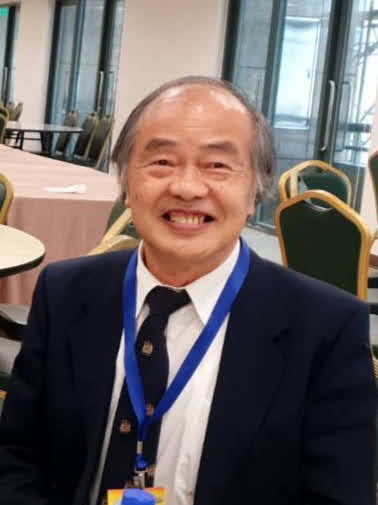
My experience publishing in Psychology and Mental Health Care was exceptional. The peer review process was rigorous and constructive, with reviewers providing valuable insights that helped enhance the quality of our work. The editorial team was highly supportive and responsive, making the submission process smooth and efficient. The journal's commitment to high standards and academic rigor makes it a respected platform for quality research. I am grateful for the opportunity to publish in such a reputable journal.
My experience publishing in International Journal of Clinical Case Reports and Reviews was exceptional. I Come forth to Provide a Testimonial Covering the Peer Review Process and the editorial office for the Professional and Impartial Evaluation of the Manuscript.

I would like to offer my testimony in the support. I have received through the peer review process and support the editorial office where they are to support young authors like me, encourage them to publish their work in your esteemed journals, and globalize and share knowledge globally. I really appreciate your journal, peer review, and editorial office.
Dear Agrippa Hilda- Editorial Coordinator of Journal of Neuroscience and Neurological Surgery, "The peer review process was very quick and of high quality, which can also be seen in the articles in the journal. The collaboration with the editorial office was very good."

I would like to express my sincere gratitude for the support and efficiency provided by the editorial office throughout the publication process of my article, “Delayed Vulvar Metastases from Rectal Carcinoma: A Case Report.” I greatly appreciate the assistance and guidance I received from your team, which made the entire process smooth and efficient. The peer review process was thorough and constructive, contributing to the overall quality of the final article. I am very grateful for the high level of professionalism and commitment shown by the editorial staff, and I look forward to maintaining a long-term collaboration with the International Journal of Clinical Case Reports and Reviews.
To Dear Erin Aust, I would like to express my heartfelt appreciation for the opportunity to have my work published in this esteemed journal. The entire publication process was smooth and well-organized, and I am extremely satisfied with the final result. The Editorial Team demonstrated the utmost professionalism, providing prompt and insightful feedback throughout the review process. Their clear communication and constructive suggestions were invaluable in enhancing my manuscript, and their meticulous attention to detail and dedication to quality are truly commendable. Additionally, the support from the Editorial Office was exceptional. From the initial submission to the final publication, I was guided through every step of the process with great care and professionalism. The team's responsiveness and assistance made the entire experience both easy and stress-free. I am also deeply impressed by the quality and reputation of the journal. It is an honor to have my research featured in such a respected publication, and I am confident that it will make a meaningful contribution to the field.

"I am grateful for the opportunity of contributing to [International Journal of Clinical Case Reports and Reviews] and for the rigorous review process that enhances the quality of research published in your esteemed journal. I sincerely appreciate the time and effort of your team who have dedicatedly helped me in improvising changes and modifying my manuscript. The insightful comments and constructive feedback provided have been invaluable in refining and strengthening my work".
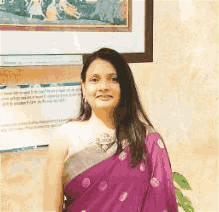
I thank the ‘Journal of Clinical Research and Reports’ for accepting this article for publication. This is a rigorously peer reviewed journal which is on all major global scientific data bases. I note the review process was prompt, thorough and professionally critical. It gave us an insight into a number of important scientific/statistical issues. The review prompted us to review the relevant literature again and look at the limitations of the study. The peer reviewers were open, clear in the instructions and the editorial team was very prompt in their communication. This journal certainly publishes quality research articles. I would recommend the journal for any future publications.
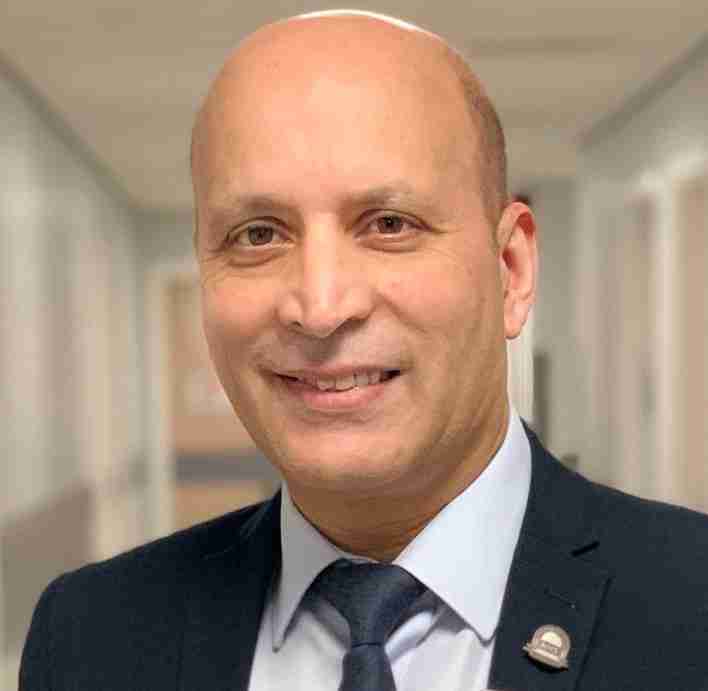
Dear Jessica Magne, with gratitude for the joint work. Fast process of receiving and processing the submitted scientific materials in “Clinical Cardiology and Cardiovascular Interventions”. High level of competence of the editors with clear and correct recommendations and ideas for enriching the article.

We found the peer review process quick and positive in its input. The support from the editorial officer has been very agile, always with the intention of improving the article and taking into account our subsequent corrections.
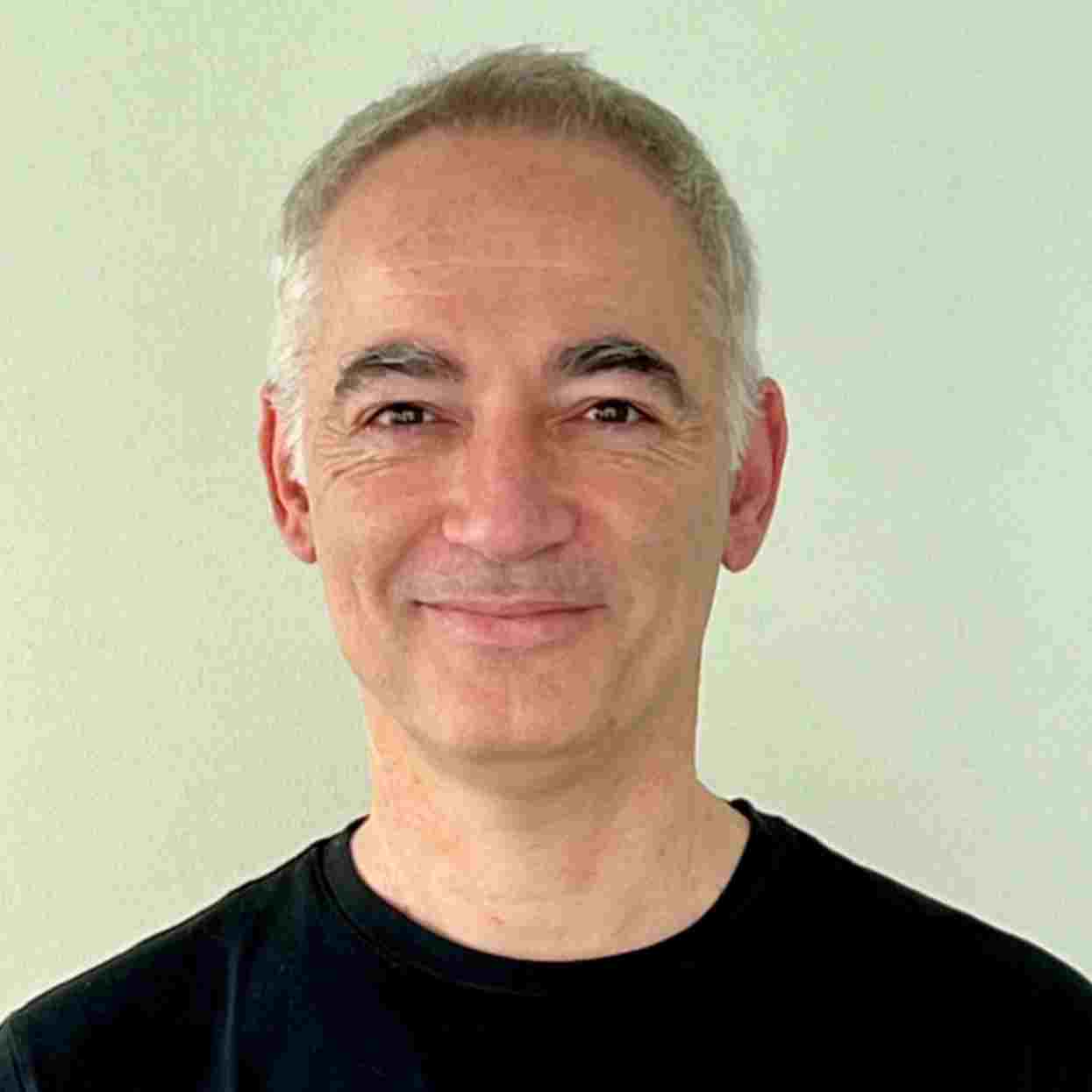
My article, titled 'No Way Out of the Smartphone Epidemic Without Considering the Insights of Brain Research,' has been republished in the International Journal of Clinical Case Reports and Reviews. The review process was seamless and professional, with the editors being both friendly and supportive. I am deeply grateful for their efforts.
To Dear Erin Aust – Editorial Coordinator of Journal of General Medicine and Clinical Practice! I declare that I am absolutely satisfied with your work carried out with great competence in following the manuscript during the various stages from its receipt, during the revision process to the final acceptance for publication. Thank Prof. Elvira Farina

Dear Jessica, and the super professional team of the ‘Clinical Cardiology and Cardiovascular Interventions’ I am sincerely grateful to the coordinated work of the journal team for the no problem with the submission of my manuscript: “Cardiometabolic Disorders in A Pregnant Woman with Severe Preeclampsia on the Background of Morbid Obesity (Case Report).” The review process by 5 experts was fast, and the comments were professional, which made it more specific and academic, and the process of publication and presentation of the article was excellent. I recommend that my colleagues publish articles in this journal, and I am interested in further scientific cooperation. Sincerely and best wishes, Dr. Oleg Golyanovskiy.
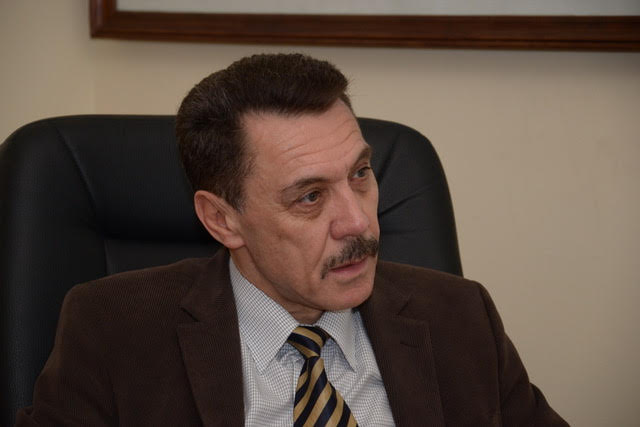
Dear Ashley Rosa, Editorial Coordinator of the journal - Psychology and Mental Health Care. " The process of obtaining publication of my article in the Psychology and Mental Health Journal was positive in all areas. The peer review process resulted in a number of valuable comments, the editorial process was collaborative and timely, and the quality of this journal has been quickly noticed, resulting in alternative journals contacting me to publish with them." Warm regards, Susan Anne Smith, PhD. Australian Breastfeeding Association.

Dear Jessica Magne, Editorial Coordinator, Clinical Cardiology and Cardiovascular Interventions, Auctores Publishing LLC. I appreciate the journal (JCCI) editorial office support, the entire team leads were always ready to help, not only on technical front but also on thorough process. Also, I should thank dear reviewers’ attention to detail and creative approach to teach me and bring new insights by their comments. Surely, more discussions and introduction of other hemodynamic devices would provide better prevention and management of shock states. Your efforts and dedication in presenting educational materials in this journal are commendable. Best wishes from, Farahnaz Fallahian.
Dear Maria Emerson, Editorial Coordinator, International Journal of Clinical Case Reports and Reviews, Auctores Publishing LLC. I am delighted to have published our manuscript, "Acute Colonic Pseudo-Obstruction (ACPO): A rare but serious complication following caesarean section." I want to thank the editorial team, especially Maria Emerson, for their prompt review of the manuscript, quick responses to queries, and overall support. Yours sincerely Dr. Victor Olagundoye.

Dear Ashley Rosa, Editorial Coordinator, International Journal of Clinical Case Reports and Reviews. Many thanks for publishing this manuscript after I lost confidence the editors were most helpful, more than other journals Best wishes from, Susan Anne Smith, PhD. Australian Breastfeeding Association.

Dear Agrippa Hilda, Editorial Coordinator, Journal of Neuroscience and Neurological Surgery. The entire process including article submission, review, revision, and publication was extremely easy. The journal editor was prompt and helpful, and the reviewers contributed to the quality of the paper. Thank you so much! Eric Nussbaum, MD